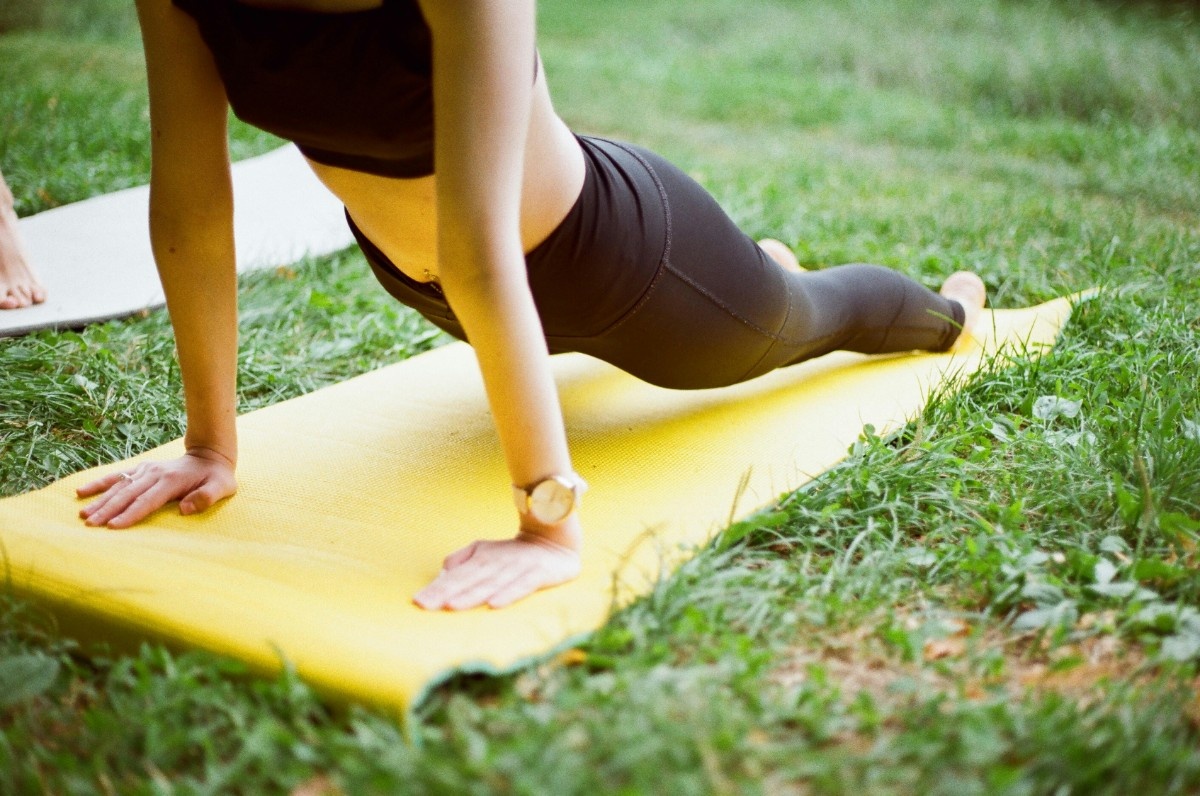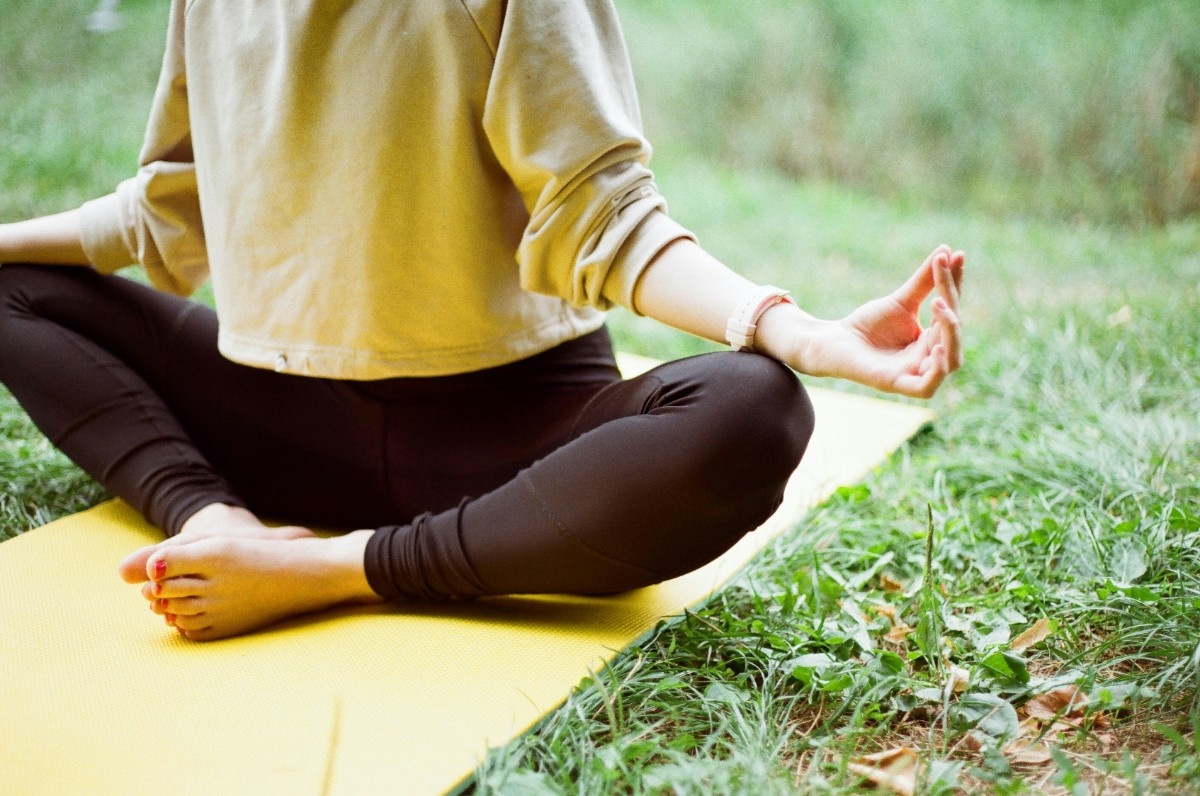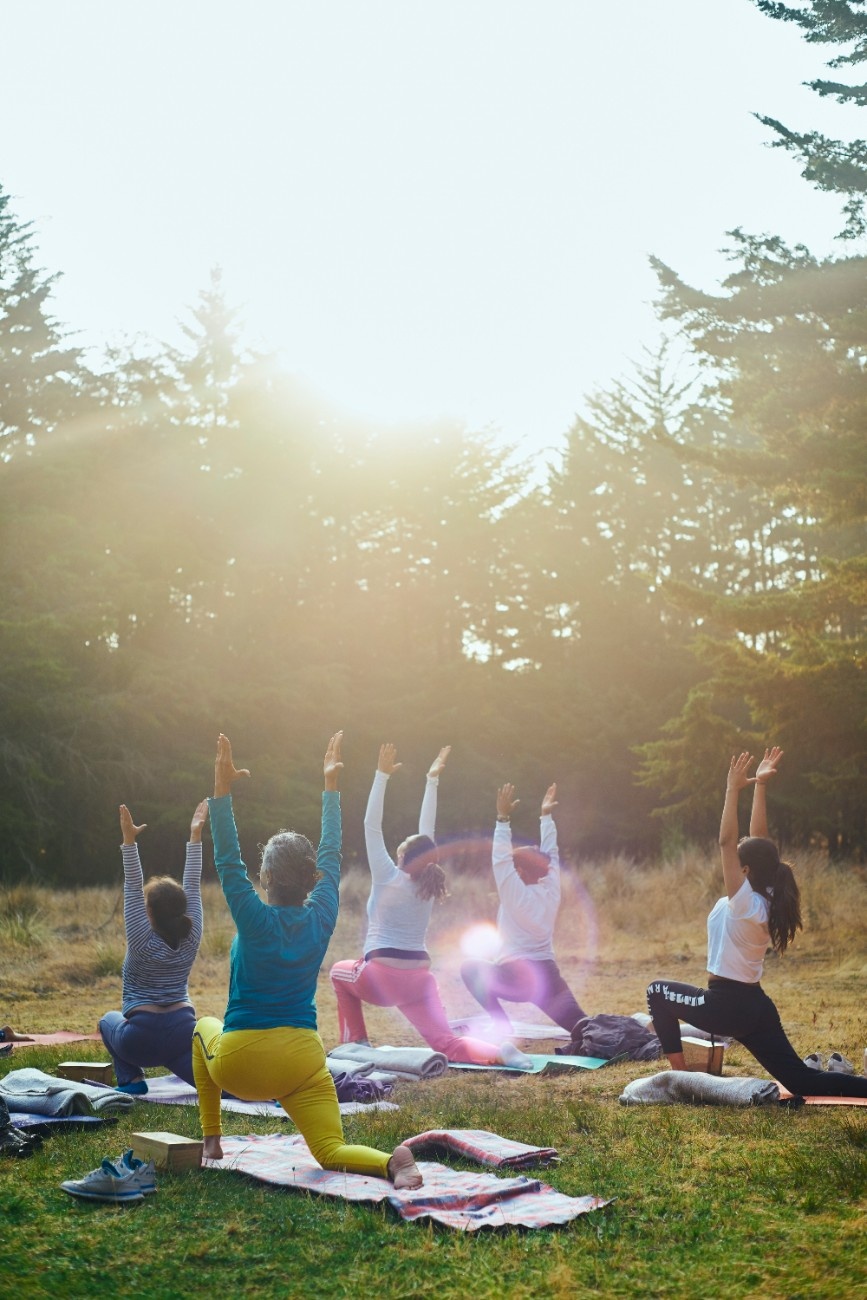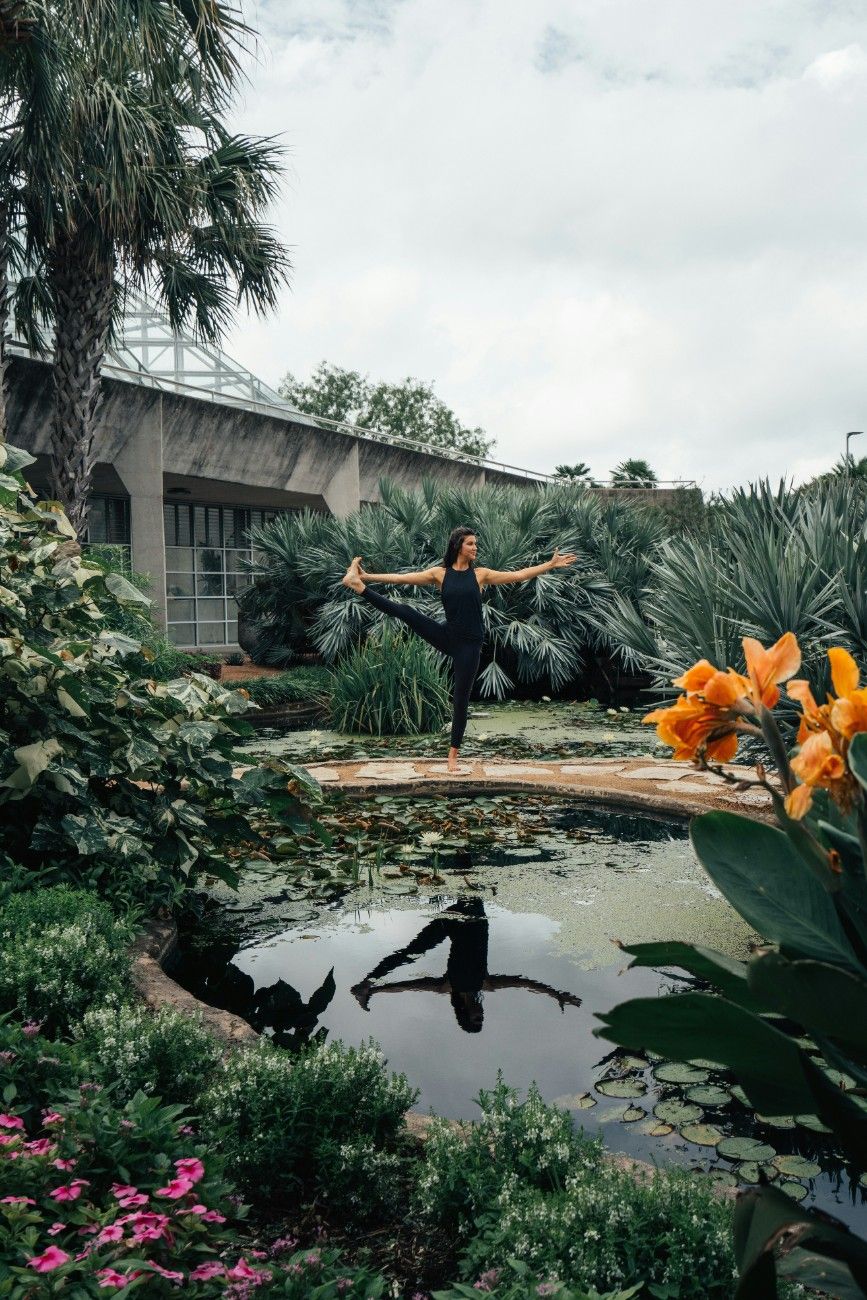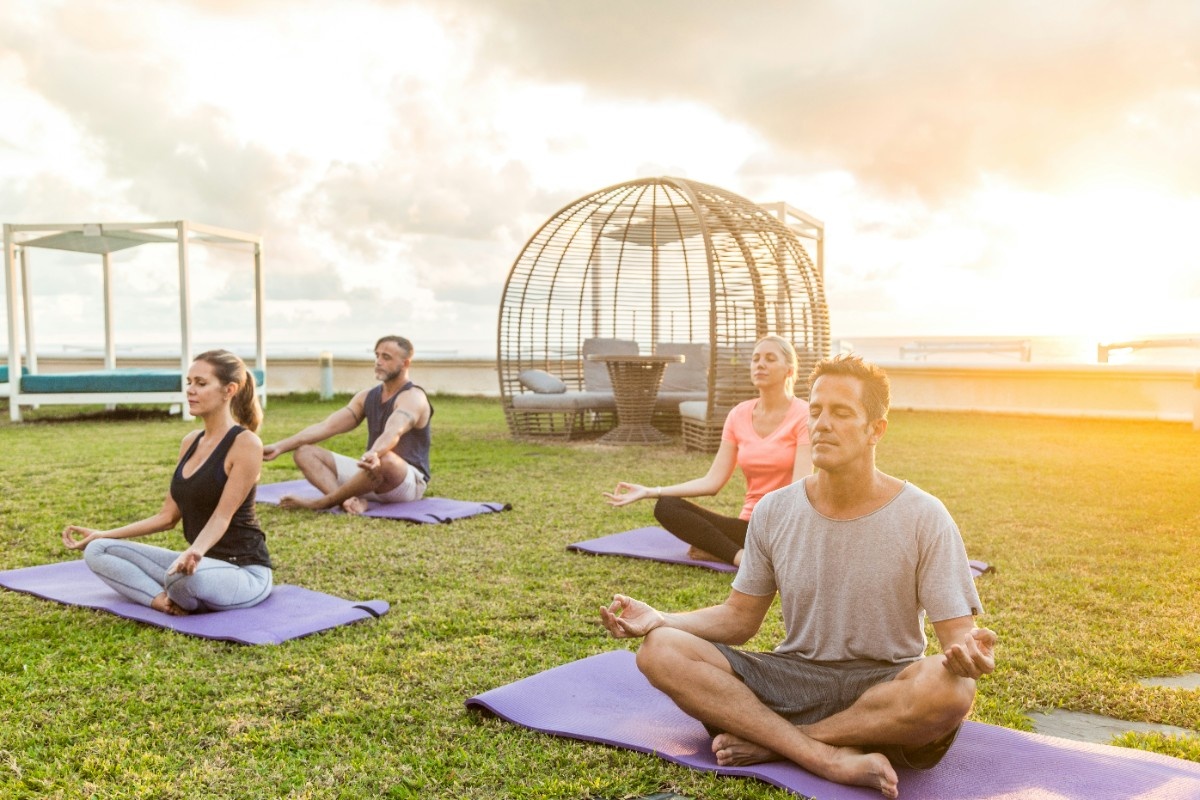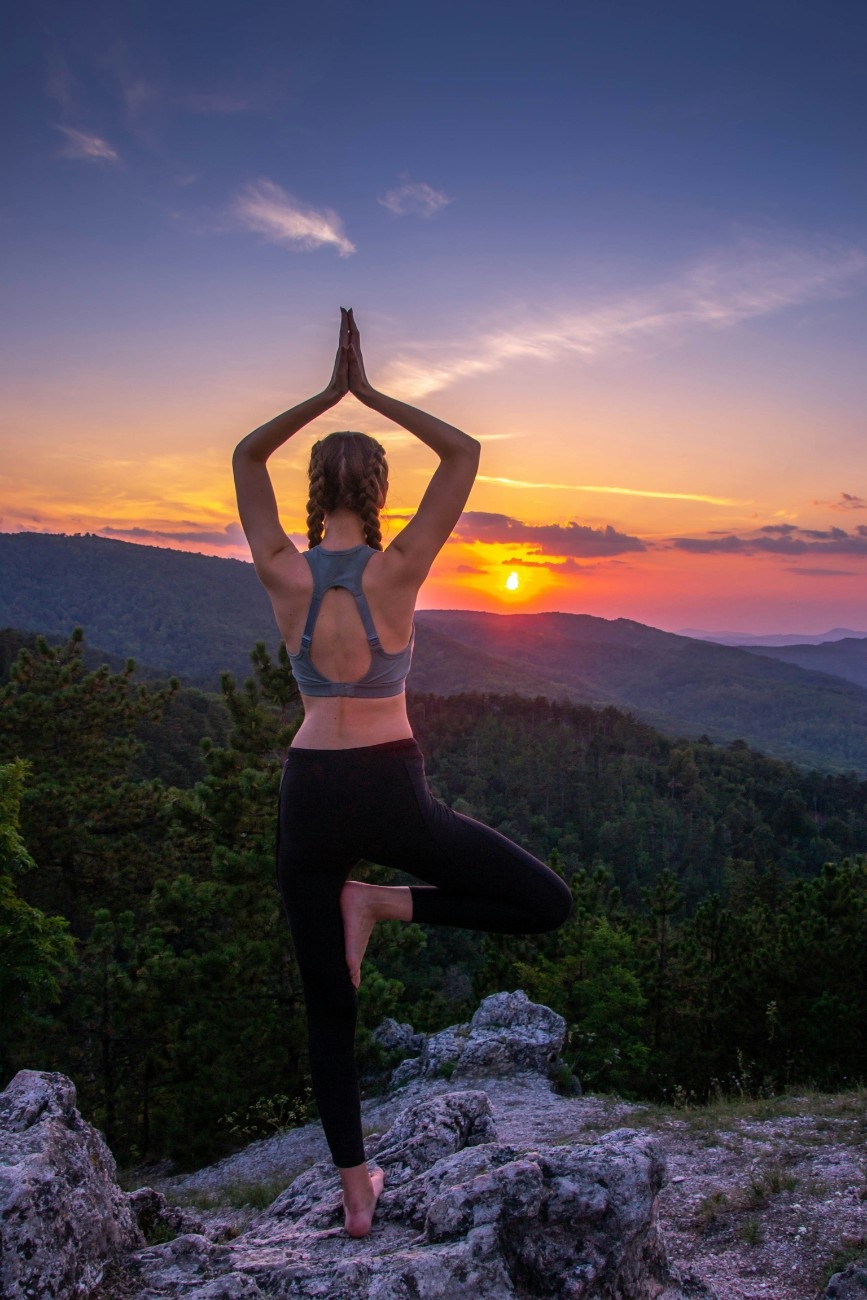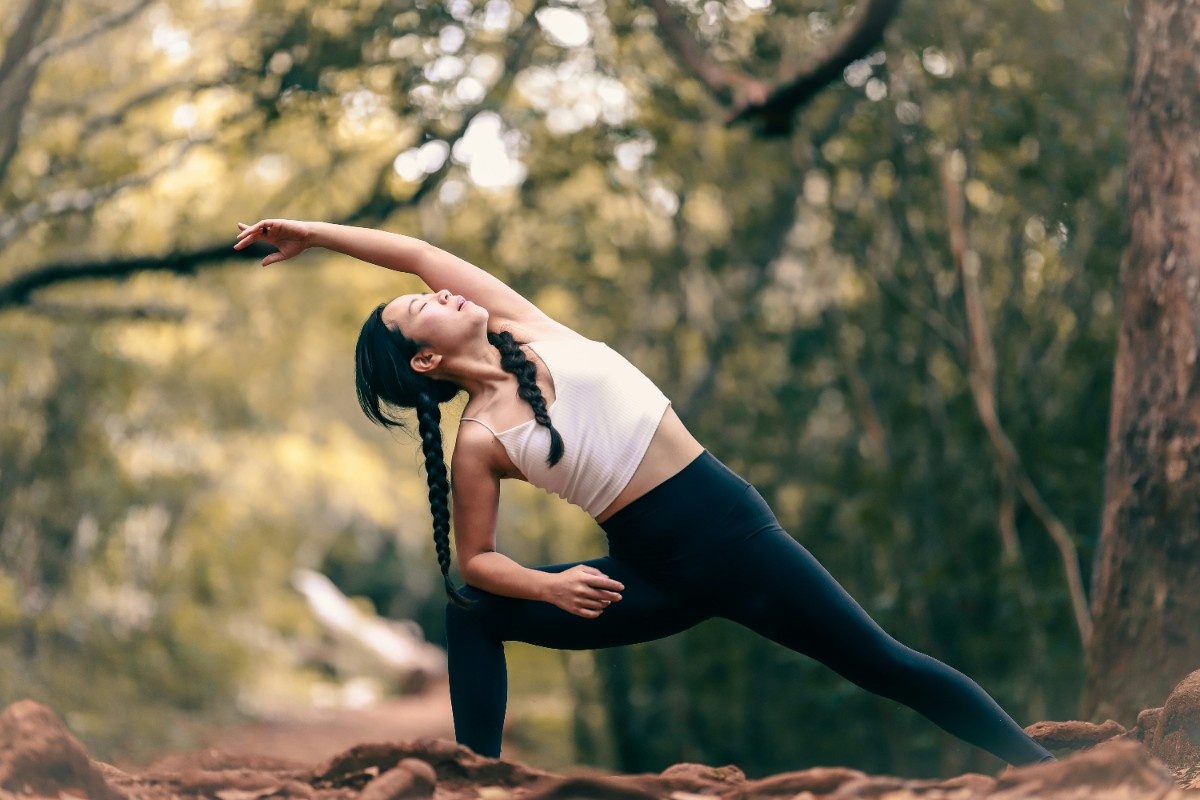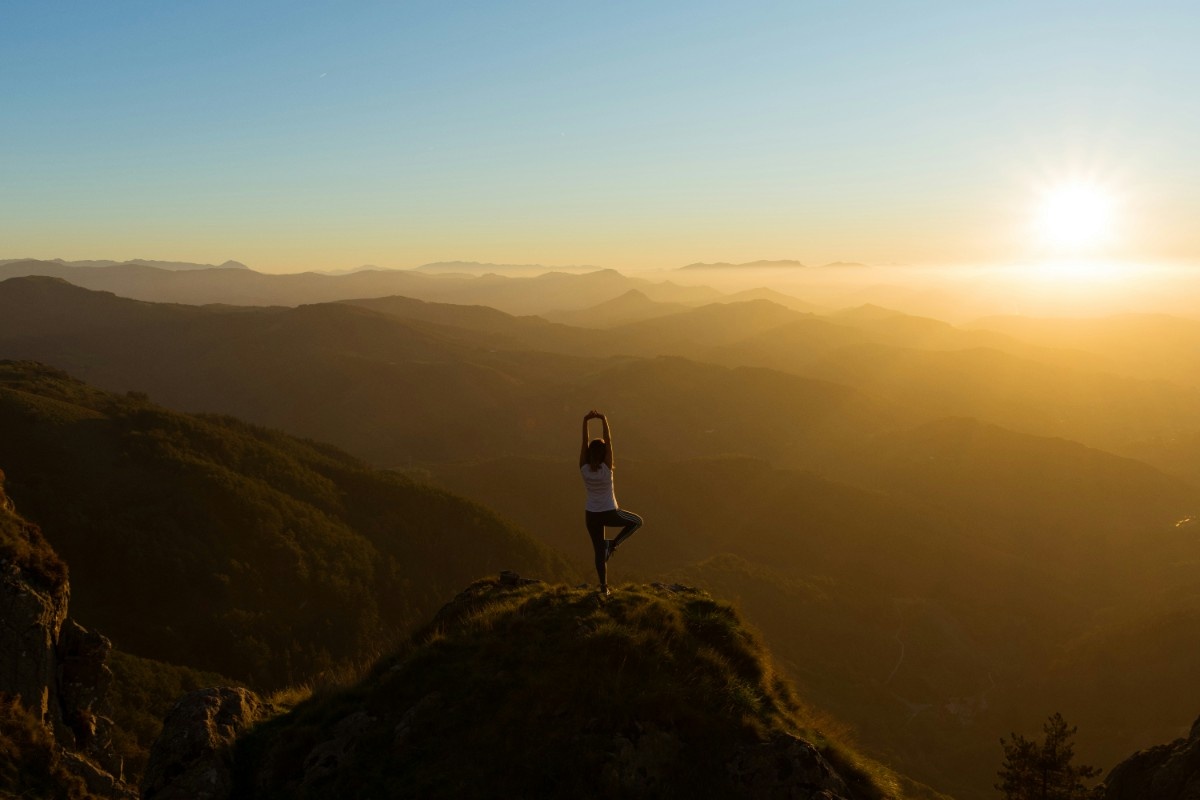Discovering the Joys of Outdoor Yoga
Embracing the Natural Environment
Stepping out of the studio and into the great outdoors can revolutionise your yoga practice. As you unroll your yoga mat outdoors, you'll be greeted by the gentle caress of the breeze, the warm kiss of the sun, and the soothing sounds of nature. Embracing the natural environment during your yoga practice allows you to connect with the world around you on a deeper level. The fresh air fills your lungs, and the earth beneath your feet grounds you, creating a sense of stability and balance. The beauty of outdoor yoga lies in its ability to awaken your senses and help you find peace and tranquillity amidst the chaos of everyday life.
Connecting with the Elements
Practising yoga outdoors offers a unique opportunity to connect with the elements. As you move through your asanas, you'll feel the earth supporting you, the air flowing through your breath, the fire of the sun energising you, and the water in your body flowing with grace. This connection to the elements can deepen your understanding of the interconnectedness of all things and help you find harmony within yourself and with the world around you. Whether you're practising on a sandy beach, in a lush forest, or on a mountain top, each natural setting offers its own unique energy and inspiration for your practice.
Flexibility and Adaptability
One of the joys of outdoor yoga is the opportunity to break free from the confines of a studio and explore new ways of practising. Without walls or mirrors, you can move your body in ways that feel natural and intuitive, rather than trying to conform to a certain aesthetic or ideal. Outdoor yoga also requires a certain level of flexibility and adaptability, as you learn to work with the uneven terrain, weather conditions, and other variables of the natural environment. This can help you cultivate a sense of resilience and creativity in your practice, as you learn to flow with the unpredictable nature of life itself.
The Physical and Mental Benefits of Practising Yoga Outdoors
Boosting Vitamin D Levels
One of the most significant physical benefits of practising yoga outdoors is the exposure to natural sunlight and the subsequent boost in vitamin D levels. Vitamin D is essential for maintaining strong bones, a healthy immune system, and a positive mood. When you practise yoga outdoors, your body can absorb vitamin D directly from the sun's rays, even on cloudy days. This can help combat vitamin D deficiency, which is a common problem in modern society, particularly in countries with limited sunlight exposure. By incorporating outdoor yoga into your regular practice, you can enjoy the many benefits of vitamin D, including improved energy levels, better sleep, and a more robust immune system.
Improving Mental Well-Being
In addition to the physical benefits, practising yoga outdoors can have a profound impact on your mental well-being. Studies have shown that spending time in nature can reduce stress, anxiety, and depression, while improving cognitive function and overall mood. When you practise yoga in a natural setting, you'll be surrounded by the beauty and tranquillity of the environment, which can help calm your mind and soothe your soul. The natural world has a way of putting things into perspective and reminding us of the bigger picture, which can be particularly helpful when we're feeling overwhelmed or stressed.
Enhancing Mindfulness and Presence
Outdoor yoga can also enhance your ability to be present and mindful in the moment. When you're practising in nature, there are countless distractions and stimuli to engage your senses, from the rustling of leaves to the chirping of birds. Rather than trying to block out these distractions, outdoor yoga encourages you to embrace them and use them as a focal point for your awareness. By tuning into the sights, sounds, and sensations of the natural world, you can cultivate a deeper sense of presence and mindfulness, both on and off the mat. This heightened awareness can help you feel more grounded, centred, and connected to the world around you.
Promoting Physical Strength and Flexibility
Practising yoga outdoors can also promote physical strength and flexibility in unique ways. The uneven terrain and natural obstacles of the outdoors can challenge your balance and stability, engaging muscles that may not be as active in a studio setting. For example, practising on sand can help strengthen your feet and ankles, while practising on a hill can engage your core and improve your proprioception. Additionally, the fresh air and natural surroundings can inspire you to move your body in new ways, exploring different poses and sequences that may not be possible indoors. This sense of exploration and play can help keep your practice fresh and engaging, while also promoting physical strength and flexibility.
Connecting with Nature through Outdoor Yoga
Attuning to the Natural World
One of the most profound aspects of outdoor yoga is the opportunity to attune to the natural world. When you step onto your outdoor yoga mat, you become an integral part of the ecosystem around you. As you move through your practice, you can synchronise your breath with the rhythm of the breeze, match your movements to the swaying of the trees, and absorb the grounding energy of the earth beneath you. This deep connection to nature can help you cultivate a sense of belonging and interconnectedness, reminding you that you are part of something greater than yourself. By tuning into the wisdom of the natural world, you can gain new insights and perspectives that can enrich your practice and your life.
Embracing the Seasons
Practising yoga outdoors allows you to embrace the changing seasons and the unique energies they bring. In the spring, you can tap into the sense of renewal and growth, as the world around you bursts into bloom. In the summer, you can bask in the warmth and vitality of the sun, letting its energy fill you with radiance and joy. In the fall, you can embrace the sense of letting go and transformation, as the leaves change colour and fall to the ground. And in the winter, you can connect with the stillness and introspection of the season, using your practice to turn inward and reflect on your own growth and evolution. By aligning your practice with the rhythms of nature, you can cultivate a deeper sense of harmony and balance in your life.
Cultivating Reverence and Respect
Practising outdoor yoga can also help cultivate a sense of reverence and respect for the natural world. When you immerse yourself in the beauty and complexity of nature, it's impossible not to feel a sense of awe and wonder. From the intricate patterns of a spider's web to the majestic arc of a rainbow, the natural world is full of moments that can take your breath away. By cultivating this sense of reverence and respect, you can develop a deeper appreciation for the earth and all its inhabitants. This can inspire you to live more sustainably, to tread more lightly on the planet, and to do your part to protect and preserve the natural world for future generations.
Exploring Different Styles of Outdoor Yoga
Aerial Yoga Outdoor
One of the most exciting and innovative styles of outdoor yoga is aerial yoga. This practice involves using a suspended silk hammock to support and enhance your yoga poses, allowing you to explore new dimensions of movement and release. When practised outdoors, aerial yoga takes on a whole new level of magic and wonder. Imagine floating weightlessly in a sea of green leaves, or swaying gently in the breeze as you gaze up at a clear blue sky. Aerial yoga outdoors can help you cultivate a sense of freedom, playfulness, and creativity in your practice, while also challenging your strength, flexibility, and balance in new ways.
SUP Yoga: Floating on Water
Another popular style of outdoor yoga is stand-up paddleboard (SUP) yoga. This practice involves balancing on a floating paddleboard while moving through a series of yoga poses, adding an extra layer of challenge and excitement to your practice. SUP yoga is typically practised on calm bodies of water, such as lakes, bays, or slow-moving rivers, allowing you to connect with the soothing energy of the water element. As you flow through your practice, you'll need to engage your core and find your centre of balance, while also surrendering to the gentle rocking of the waves. SUP yoga can be a powerful way to cultivate mindfulness, presence, and trust, both on and off the board.
Yoga Outdoors in Urban Settings
While many people associate outdoor yoga with natural settings like parks or beaches, it's also possible to practice yoga outdoors in urban environments. Rooftop gardens, city plazas, and even quiet alleyways can all provide unique and inspiring settings for your practice. Practising yoga outdoors in the city can help you find moments of peace and tranquillity amidst the hustle and bustle of urban life. It can also help you cultivate a sense of connection and community, as you share your practice with others in the heart of the city. Urban outdoor yoga can be a powerful way to find balance and perspective, reminding you that you can find beauty and stillness wherever you are.
Yoga Hikes and Nature Walks
For those who love to combine their yoga practice with a sense of adventure and exploration, yoga hikes and nature walks offer the perfect blend of movement, mindfulness, and nature immersion. These practices typically involve hiking or walking through a natural setting, stopping periodically to practice yoga poses or meditations along the way. Yoga hikes can range from gentle, meandering walks to more strenuous treks, depending on your fitness level and preferences. By practising yoga in the midst of a natural landscape, you can deepen your connection to the earth and tap into the healing power of nature. Whether you're hiking through a lush forest, a rugged mountain trail, or a sandy coastline, yoga hikes offer a unique and transformative way to explore both your inner and outer landscapes.
Choosing the Perfect Location for Your Outdoor Yoga Practice
Considering Safety and Accessibility
When selecting a location for your outdoor yoga practice, safety and accessibility should be top priorities. Look for a space that is easy to reach and navigate, with a relatively flat and even surface to prevent trips or falls. Avoid areas with heavy traffic, loose debris, or other hazards that could disrupt your practice or cause injury. If you're practising in a public space, such as a park or beach, be mindful of local regulations and guidelines, and always prioritise your personal safety and well-being. It's also a good idea to let someone know where you'll be practising and when you expect to return, especially if you're exploring a new or remote location.
Seeking Solitude or Community
Another important factor to consider when choosing a location for your outdoor yoga practice is the level of solitude or community you desire. Some practitioners prefer the peace and privacy of a secluded spot, where they can tune out distractions and focus inward. Others enjoy the energy and camaraderie of practising with others, whether in an organised class or a casual gathering of friends. Consider your personal preferences and intentions for your practice, and seek out a location that aligns with your needs. If you're drawn to solitude, look for quiet, off-the-beaten-path spots like hidden trails or secluded beaches. If you thrive in community, seek out popular outdoor yoga spots or join local meetup groups to connect with like-minded practitioners.
Embracing Natural Beauty and Inspiration
One of the greatest joys of practising yoga outdoors is the opportunity to immerse yourself in the beauty and wonder of nature. When choosing a location for your practice, look for spots that inspire and uplift you, whether it's a serene forest glade, a stunning mountain vista, or a tranquil waterfront. Consider the natural features and elements that resonate with you, and seek out locations that embody those qualities. You might find that practising near water brings a sense of fluidity and grace to your movements, while practising on a mountain top evokes feelings of strength and grounding. By embracing the natural beauty and inspiration of your surroundings, you can deepen your connection to the earth and tap into the transformative power of outdoor yoga.
Adapting to the Elements
When selecting a location for your outdoor yoga practice, it's important to consider the elements and how they might impact your experience. Different seasons, weather conditions, and times of day can all affect the energy and ambiance of a space, as well as your physical comfort and safety. In the summer, look for shaded spots to avoid overheating and sun exposure, and practice early in the morning or late in the evening to beat the heat. In the winter, seek out sunny, sheltered spots to stay warm and protected from the wind. Be mindful of the forecast and prepare accordingly, whether that means packing extra layers, sunscreen, or insect repellent. By learning to adapt to the elements and work with the natural conditions of your environment, you can cultivate resilience, flexibility, and a deeper sense of connection to the world around you.
Essential Gear and Preparations for Practising Yoga Outdoors
Investing in a Durable Outdoor Yoga Mat
One of the most important pieces of gear for practising yoga outdoors is a high-quality, durable yoga mat. Unlike indoor mats, which are typically thin and sticky, outdoor yoga mats need to be thicker, more cushioned, and able to withstand the elements. Look for mats made from natural, eco-friendly materials like jute, cork, or natural rubber, which offer excellent grip and support while also being biodegradable and non-toxic. Consider the size and weight of the mat as well, especially if you plan to travel or hike with it. Some outdoor yoga mats even come with built-in straps or carrying cases for easy transport and storage. By investing in a reliable, durable outdoor yoga mat, you can create a stable and comfortable foundation for your practice, no matter where your adventures take you.
Dressing for the Elements
Another key aspect of preparing for outdoor yoga is dressing appropriately for the elements. Depending on the season, weather, and time of day, you may need to adjust your clothing choices to stay comfortable and protected. In warm weather, opt for lightweight, breathable fabrics that wick away sweat and allow your skin to breathe. Consider wearing layers that you can easily remove or add as needed, such as a light jacket or long-sleeved shirt. In cooler weather, choose insulating, moisture-wicking materials that will keep you warm without overheating, and don't forget to pack extra layers like gloves, a hat, or a scarf. Always wear comfortable, flexible clothing that allows you to move freely and won't restrict your practice. And don't forget the sunscreen, even on cloudy days, to protect your skin from harmful UV rays.
Staying Hydrated and Nourished
Practising yoga outdoors can be more physically demanding than practising indoors, especially in hot or humid conditions. To stay hydrated and nourished throughout your practice, be sure to bring plenty of water and maybe even a light snack or electrolyte drink. Consider investing in a reusable water bottle with a built-in filter, so you can refill it from natural sources like streams or lakes without worrying about contaminants. Pack a small, insulated cooler bag with ice packs to keep your water and snacks cool, and don't forget to bring a small towel to wipe away sweat or use as a prop in your practice. By staying hydrated and nourished, you can maintain your energy levels, support your physical and mental well-being, and fully embrace the joys of outdoor yoga.
Preparing for the Unexpected
When practising yoga outdoors, it's important to be prepared for the unexpected. Whether it's a sudden change in weather, an encounter with wildlife, or a minor injury, having the right gear and knowledge can make all the difference. Consider packing a small first-aid kit with essentials like bandages, antiseptic wipes, and pain relievers, as well as any personal medications you may need. Bring a compact, lightweight blanket or tarp that you can use as a ground cover, shade, or shelter in case of rain or wind. And don't forget to pack a fully charged phone or communication device, as well as a map or GPS app, in case you need to navigate or call for help. By preparing for the unexpected, you can embark on your outdoor yoga journey with confidence and peace of mind, ready to embrace whatever challenges and opportunities come your way.
Adapting Your Yoga Practice to the Outdoor Environment
Embracing Uneven Terrain
One of the most significant differences between practising yoga indoors and outdoors is the varying terrain. While indoor studios provide a predictable, level surface, outdoor yoga often involves working with uneven ground, such as grass, sand, or even rocky surfaces. Embracing this challenge can help you develop greater balance, stability, and body awareness in your practice. When practising on uneven terrain, focus on engaging your core and finding a sense of grounding through your feet and hands. Use your breath to help you stay centred and balanced, and don't be afraid to modify poses as needed to accommodate the surface beneath you. By learning to adapt to and embrace uneven terrain, you can cultivate a more resilient and versatile practice that can serve you both on and off the mat.
Working with the Weather
Another key aspect of adapting your yoga practice to the outdoor environment is learning to work with the weather. Unlike indoor studios, which are climate-controlled and predictable, outdoor yoga involves surrendering to the elements and finding ways to work with whatever conditions arise. In hot and sunny weather, practice early in the morning or late in the evening to avoid the midday heat, and seek out shaded areas to protect your skin from sun damage. In cooler or windy weather, dress in layers that you can easily remove or add as needed, and consider using props like blankets or blocks to provide extra warmth and support. Regardless of the weather, always listen to your body and honour your own needs and limitations. If you feel overheated, dizzy, or fatigued, take a break and seek shelter or hydration as needed. By learning to work with the weather and adapt your practice accordingly, you can cultivate a more mindful and responsive approach to yoga outdoors.
Tuning into Nature's Rhythms
One of the most profound benefits of practising yoga outdoors is the opportunity to tune into nature's rhythms and cycles. Unlike the artificial lighting and constant stimulation of indoor environments, outdoor yoga allows you to synchronise your practice with the natural world around you. Notice how the energy and atmosphere of your practice space change throughout the day, from the soft, golden light of dawn to the rich, warm hues of sunset. Observe how the sounds and sensations of nature – the rustle of leaves, the chirping of birds, the feeling of a gentle breeze on your skin – can deepen your sense of presence and connection to the earth. By tuning into nature's rhythms and allowing them to guide and inspire your practice, you can cultivate a more organic and intuitive approach to yoga that honours the wisdom of the natural world.
Cultivating Mindfulness and Presence
Practising yoga outdoors can also be a powerful tool for cultivating mindfulness and presence. In the midst of nature's beauty and ever-changing conditions, it's easy to get distracted or caught up in thoughts about the past or future. However, by bringing your attention back to the present moment and the sensations of your body and breath, you can deepen your sense of awareness and connection to the world around you. Use the natural elements as anchors for your attention – the feeling of the earth beneath your feet, the sound of the wind in the trees, the warmth of the sun on your face. When your mind wanders, gently guide it back to the present moment and the physical sensations of your practice. By cultivating mindfulness and presence through outdoor yoga, you can develop a more grounded and centred approach to life, both on and off the mat.
Cultivating a Sustainable and Eco-Friendly Outdoor Yoga Practice
Choosing Eco-Friendly Yoga Gear
One of the key ways to cultivate a sustainable and eco-friendly outdoor yoga practice is by choosing gear that minimises your environmental impact. When selecting a yoga mat for outdoor use, look for options made from natural, biodegradable materials like jute, cork, or natural rubber, rather than synthetic materials like PVC or TPE. Consider investing in a mat that is durable and long-lasting, so you can minimise waste and reduce the need for frequent replacements. Similarly, when choosing clothing for outdoor yoga, opt for items made from organic, sustainable materials like bamboo, hemp, or recycled polyester, which have a lower environmental footprint than conventional fabrics. By making conscious choices about your yoga gear, you can support eco-friendly businesses and reduce your own carbon footprint, while still enjoying the benefits of practising yoga outdoors.
Practising Leave No Trace Principles
Another important aspect of cultivating a sustainable and eco-friendly outdoor yoga practice is adhering to Leave No Trace principles. These guidelines, which were developed by the Leave No Trace Centre for Outdoor Ethics, provide a framework for minimising our impact on the natural world and preserving the integrity of outdoor spaces for future generations. Some key principles to keep in mind when practising yoga outdoors include:
- Pack out all rubbish and waste, including food scraps and packaging
- Avoid disturbing wildlife or damaging plants and natural features
- Stay on designated trails and practice areas to minimise erosion and habitat disturbance
- Respect other visitors and practice areas by maintaining a quiet and peaceful atmosphere
- Leave the practice space in the same or better condition than you found it
By following these principles and being mindful of our impact on the environment, we can ensure that our outdoor yoga practice is sustainable and respectful of the natural world around us.
Supporting Local and Sustainable Businesses
In addition to making eco-friendly choices about our own yoga gear and practices, we can also support local and sustainable businesses that share our values. When purchasing yoga gear or clothing, look for brands that prioritise sustainability, ethical production, and giving back to local communities, such as Vuori and Lilybod. Consider supporting local outdoor yoga studios or instructors who have a commitment to environmental stewardship and community building. By voting with our money and supporting businesses that align with our values, we can help create a more sustainable and equitable future for all.
Educating and Inspiring Others
Finally, as outdoor yoga practitioners, we have a unique opportunity to educate and inspire others about the importance of environmental stewardship and sustainability. By modelling eco-friendly practices and sharing our knowledge and passion with others, we can help create a ripple effect of positive change in our communities and beyond. Consider organising or participating in community clean-up events, volunteering with local environmental organisations, or simply sharing your love of outdoor yoga and nature with friends and family. By living our values and leading by example, we can inspire others to cultivate a more sustainable and conscious relationship with the natural world, both on and off the mat.
Related Articles

Let us know you agree to cookies
We use marketing, analytical and functional cookies as well as similar technologies to give you the best experience. Third parties, including social media platforms, often place tracking cookies on our site to show you personalised adverts outside of our website.
We store your cookie preferences for two years and you can edit your preferences via ‘manage cookies’ or through the cookie policy at the bottom of every page. For more information, please see our cookie policy.
